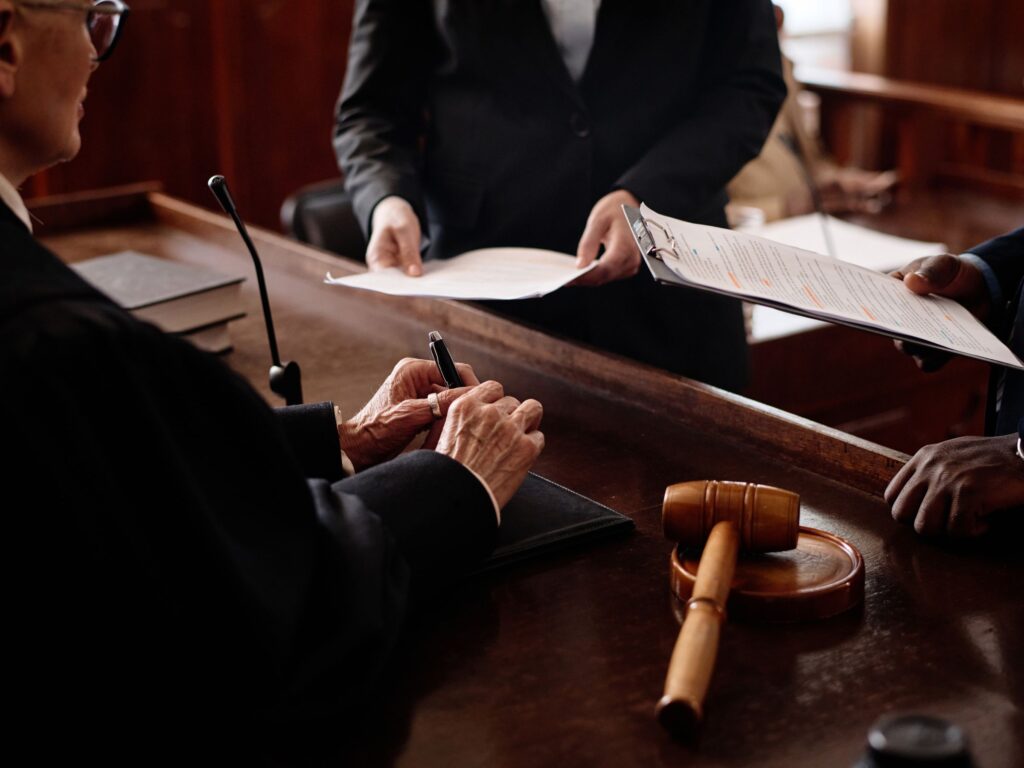Maximize Your Civil Litigation Success with Timely Pleadings and Motions
Strategic and timely filing of pleadings and motions can make or break your case. At Polek Law, our San Diego civil litigator ensures your case stays on track for a positive outcome.
Types of Motions Our Lawyers Can Help With
Motion to Compel
When one party wants to force another party to take some sort of action that they are refusing to perform, they can file a motion to compel. If the motion is granted, the court will issue an order compelling the non-cooperative party to do what has been requested.
Motion to Compel Discovery
This motion is filed to request that the court orders the opposing party to provide requested information during the discovery process. It’s used when one party believes the other is withholding relevant documents, answers to interrogatories, or other discovery materials.
Motion to Strike
When one party wishes for a statement or piece of evidence to be removed from the record of judicial proceedings, they can bring a motion to strike. This motion can also be used to ask the court to remove certain allegations or parts of a pleading (e.g., a complaint) because they are irrelevant, immaterial, or legally insufficient.
Motion for Continuance
This motion asks the court to postpone a scheduled hearing, trial, or other court proceedings. It’s usually made when one party needs more time to prepare or due to unforeseen circumstances.
Motion for Joinder
This motion seeks to add additional parties to a lawsuit when their involvement is necessary to fully adjudicate the case.
Motion for Preliminary Injunction
Parties file this motion to request that the court orders a party to do or refrain from doing something while the case is pending. It’s often used in cases where immediate action is necessary to prevent irreparable harm.
Motion for Protective Order
Parties file this motion to request that certain information or documents remain confidential or be subject to limited disclosure during the litigation process.
Motion for Relief from Judgment
This motion is used to ask the court to set aside or modify a previously issued judgment or order. It’s often based on newly discovered evidence, legal errors, or other compelling reasons.
Motion for Remittitur or Additur
After a jury verdict, parties may file a motion for remittitur (to reduce damages) or additur (to increase damages) if they believe the jury’s award was excessive or inadequate.
Pleadings and Pre-Trial Motions in California
Pleadings and pre-trial motions are filed prior to trial and will have the same caption that includes the following information:
- Name(s) of plaintiff(s)
- Name(s) of defendant(s)
- State
- County
- Case number (docket number)
- Name or type of pleading
- Court name
- Judge name (if known)
The main types of pleadings are described below:
Complaint
This is the initial pleading filed by the plaintiff (the party bringing the lawsuit). The complaint outlines the plaintiff's claims, the factual basis for those claims, and the relief or remedies sought from the court. It essentially initiates the lawsuit.
Answer
The defendant (the party being sued) responds to the complaint with an answer. In the answer, the defendant admits or denies the allegations made in the complaint. It may also include affirmative defenses and counterclaims if the defendant has claims against the plaintiff.
Counterclaim
If the defendant has claims against the plaintiff, they can file a counterclaim within their answer. A counterclaim is a separate claim against the plaintiff, which becomes part of the same lawsuit.
Cross-Claim
In cases with multiple defendants or plaintiffs, one defendant may assert a cross-claim against another defendant or plaintiff. Cross-claims typically involve disputes between parties on the same side of the main lawsuit.
Third-Party Complaint
A defendant may file a third-party complaint to bring in a new party who is not originally part of the lawsuit but is potentially liable to the defendant for some or all of the plaintiff's claims.
Amended Pleadings
Parties can seek court permission to amend their pleadings to make changes, correct errors, or add new claims or defenses as the case progresses.
Reply
In response to a counterclaim, the plaintiff may file a reply, which addresses the allegations raised in the counterclaim.
The main types of pretrial motions are described below.
Motion to Dismiss

Though either party can file a motion to dismiss if they believe the case should be terminated for legal reasons (e.g., lack of jurisdiction, failure to state a claim), it is typically the defendant who files such a motion. This is not a traditional pleading, but can be part of the pre-trial process.
Motion for Summary Judgment

This pre-trial motion seeks a judgment in favor of one party. It argues that there are no genuine disputes of material fact, and the case should be decided based on the law alone. It’s often used when the facts are not in dispute, and the case can be resolved based on legal principles.
Motion for Default Judgment

When a defendant fails to respond to a lawsuit or otherwise participate in the legal process, the plaintiff can file this motion to request a judgment in their favor by default.
Motion for Change of Venue

In cases where the current venue is inconvenient or prejudicial to one party, this motion requests the court to transfer the case to a different location. Motion for Judgment on the Pleadings.
